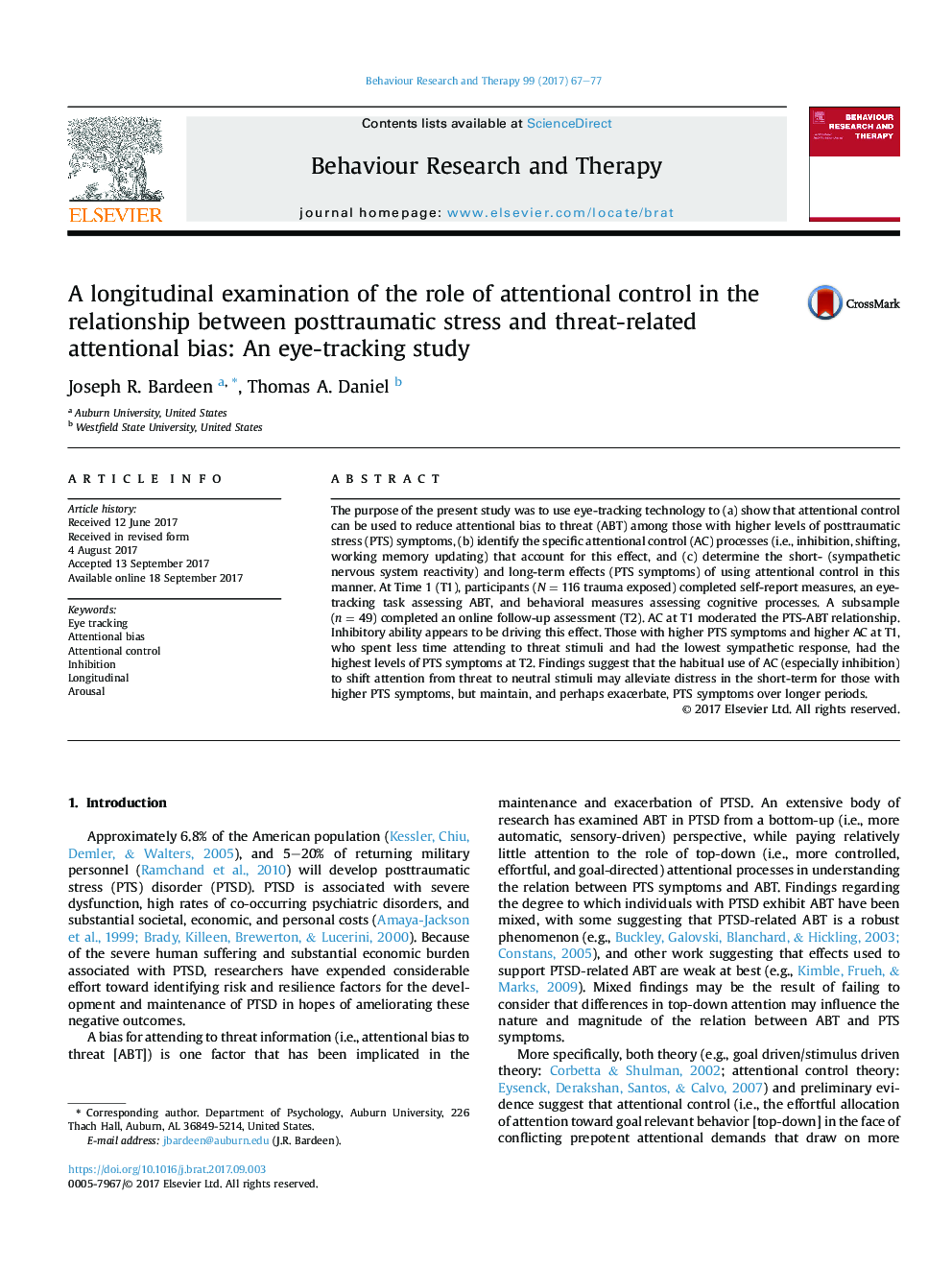| Article ID | Journal | Published Year | Pages | File Type |
|---|---|---|---|---|
| 5038112 | Behaviour Research and Therapy | 2017 | 11 Pages |
â¢Examined attentional control (AC), attentional bias to threat (ABT), and posttraumatic stress (PTS).â¢ABT was assessed via eye-tracking and AC processes were assessed via behavioral tasks.â¢Combination of higher PTS and higher AC predicted less ABT and less emotional arousal at baseline (T1).â¢Among AC processes, inhibitory ability was the strongest contributor to this effect at T1.â¢Combination of higher PTS and higher AC at T1 predicted highest PTS six months later.
The purpose of the present study was to use eye-tracking technology to (a) show that attentional control can be used to reduce attentional bias to threat (ABT) among those with higher levels of posttraumatic stress (PTS) symptoms, (b) identify the specific attentional control (AC) processes (i.e., inhibition, shifting, working memory updating) that account for this effect, and (c) determine the short- (sympathetic nervous system reactivity) and long-term effects (PTS symptoms) of using attentional control in this manner. At Time 1 (T1), participants (N = 116 trauma exposed) completed self-report measures, an eye-tracking task assessing ABT, and behavioral measures assessing cognitive processes. A subsample (n = 49) completed an online follow-up assessment (T2). AC at T1 moderated the PTS-ABT relationship. Inhibitory ability appears to be driving this effect. Those with higher PTS symptoms and higher AC at T1, who spent less time attending to threat stimuli and had the lowest sympathetic response, had the highest levels of PTS symptoms at T2. Findings suggest that the habitual use of AC (especially inhibition) to shift attention from threat to neutral stimuli may alleviate distress in the short-term for those with higher PTS symptoms, but maintain, and perhaps exacerbate, PTS symptoms over longer periods.
